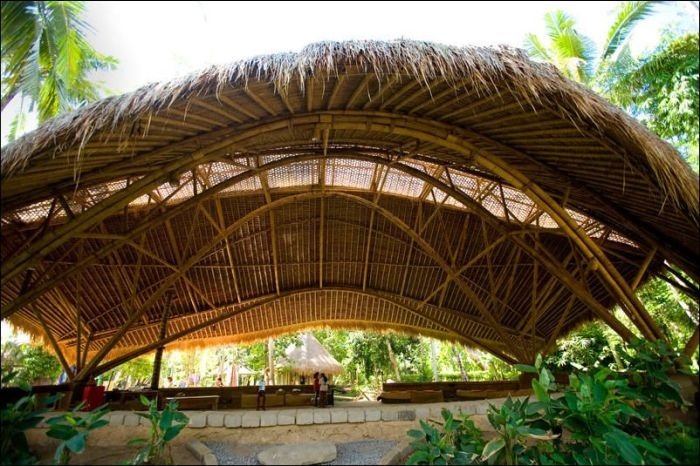Green School, Bali
|
Ecology
Bali lies just to the west of the Wallace Line, and thus has a fauna which is Asian in character, with very little Australasian influence, and has more in common with Java than with Lombok. An exception is the Yellow-crested Cockatoo, a member of a primarily Australasian family. There are around 280 species of birds, including the critically endangered Bali Starling, which is endemic. Others Include Barn Swallow, Black-naped Oriole, Black Racket-tailed Treepie, Crested Serpent-eagle, Crested Treeswift, Dollarbird, Java Sparrow, Lesser Adjutant, Long-tailed Shrike, Milky Stork, Pacific Swallow, Red-rumped Swallow, Sacred Kingfisher, Sea Eagle, Woodswallow, Savanna Nightjar, Stork-billed Kingfisher, Yellow-vented Bulbul, White Heron, Great Egret.
Until the early 20th century, Bali was home to several large mammals: the wild Banteng, Leopard and an endemic subspecies of Tiger, the Bali Tiger. The Banteng still occurs in its domestic form, while leopards are found only in neighboring Java, and the Bali Tiger is extinct. The last definite record of a Tiger on Bali dates from 1937, when one was shot, though the subspecies may have survived until the 1940s or 1950s. The relatively small size of the island, conflict with humans, poaching and habitat reduction drove the Tiger to extinction. This was the smallest and rarest of all Tiger subspecies and was never caught on film or displayed in zoos, while few skins or bones remain in museums around the world. Today, the largest mammals are the Javan Rusa deer and the Wild Boar. A second, smaller species of deer, the Indian Muntjac, also occurs.
Squirrels are quite commonly encountered, less often the Asian Palm Civet, which is also kept in coffee farms to produce Kopi Luwak. Bats are well represented, perhaps the most famous place to encounter them remaining the Goa Lawah (Temple of the Bats) where they are worshipped by the locals and also constitute a tourist attraction. They also occur in other cave temples, for instance at Gangga Beach. Two species of monkey occur. The Crab-eating Macaque, known locally as “kera”, is quite common around human settlements and temples, where it becomes accustomed to being fed by humans, particularly in any of the three “monkey forest” temples, such as the popular one in the Ubud area. They are also quite often kept as pets by locals. The second monkey, far rarer and more elusive is the Silver Leaf Monkey known locally as “lutung”. They occur in few places apart from the Bali Barat National Park. Other, rarer mammals include the Leopard Cat, Sunda Pangolin and Black Giant Squirrel.
|
|









